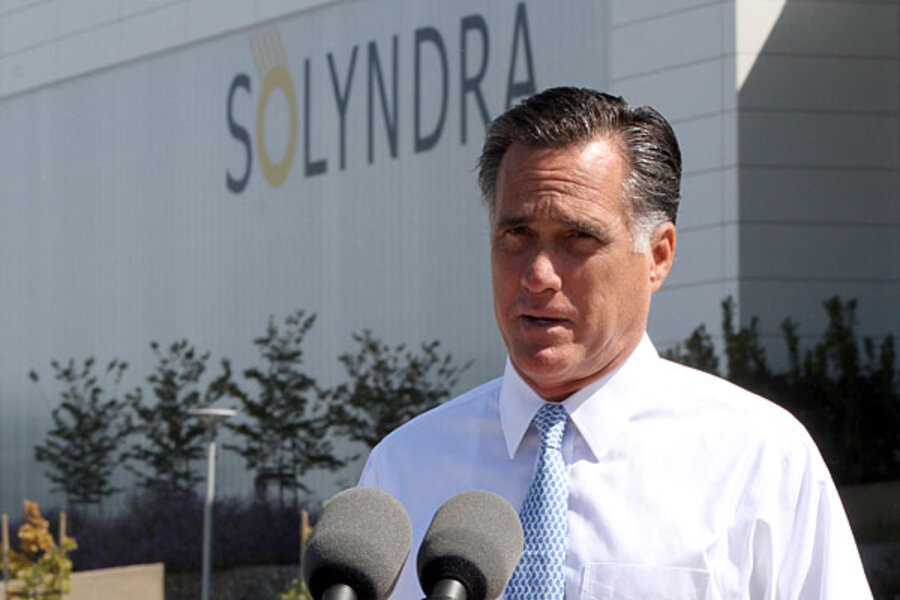Obama calls for chopping $40 billion in tax breaks for oil and gas companies. But his administration also supports federal loan guarantees for emerging energy companies. The Department of Energy website cites $34.7 billion in loan guarantees, which unlike tax breaks do not cost taxpayers unless the loans (like Solyndra) fail to get paid back. Those guarantees, the DOE says, support development of wind and solar power, electric vehicles, nuclear power, and advanced biofuels and about 60,000 high-tech jobs.
Romney supports the existing Renewable Fuel Standard that subsidizes development of advanced biofuels. Campaigning in Iowa in May 2011, Romney was quoted by The Wall Street Journal saying "ethanol is an important part of our energy solution for this country." Romney has, however, railed on Solyndra, a California solar-panel manufacturing firm that went bankrupt after getting a $535 million federal loan guarantee from the Obama administration. Romney has said he will seek to roll back tax credits enjoyed by the wind and solar industries. But he has been criticized for not also seeking to slash tax breaks for oil companies pegged at $40 billion over 10 years.








